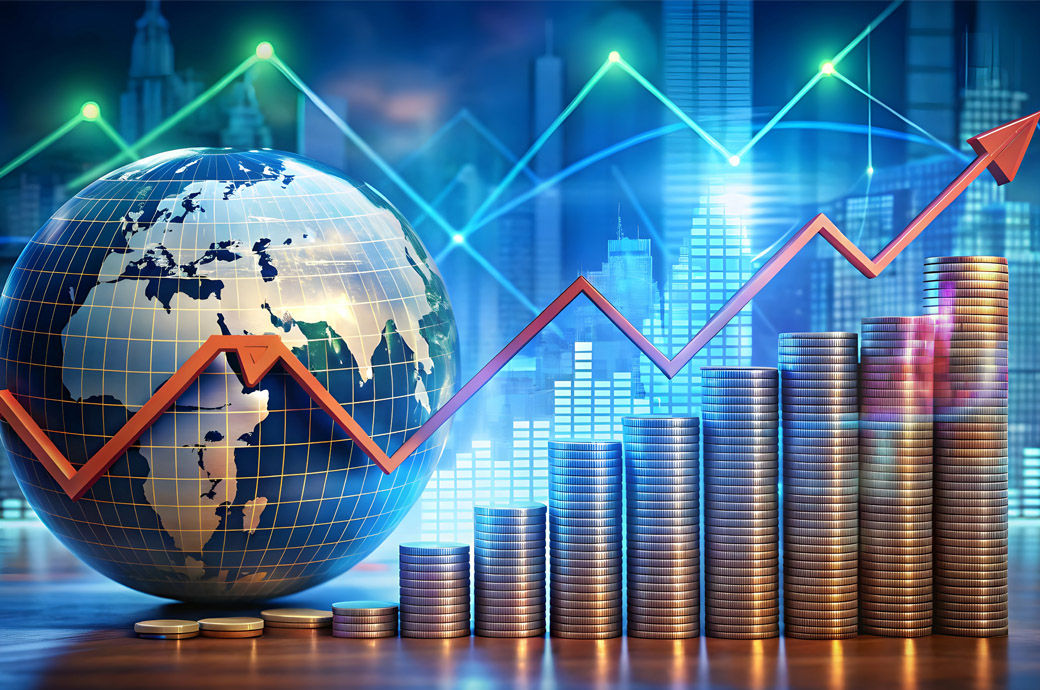
Its economists said the United States will outperform expectations, while the euro area will lag behind amid fresh tariffs anticipated from the next Donald Trump administration. US GDP is projected to increase by 2.5 per cent in 2025, and the euro area economy by 0.8 per cent.
“Global labour markets have rebalanced,” Goldman Sachs Research chief economist Jan Hatzius wrote in the team’s report titled ‘Macro Outlook 2025: Tailwinds (Probably) Trump Tariffs’.
“Inflation has continued to trend down and is now within striking distance of central bank targets. And most central banks are well into the process of cutting interest rates back to more normal levelsm,” he was quoted as saying by a Goldman Sachs release.
The world’s largest economy is expected to grow faster than other developed-market countries for the third year in a row. The re-election of US President Donald Trump is predicted to result in higher tariffs on China and on imported cars, much lower immigration, some fresh tax cuts, and regulatory easing. “The biggest risk is a large across-the-board tariff, which would likely hit growth hard,” Hatzius wrote.
US core personal consumption expenditure (PCE) inflation should slow to 2.4 per cent by late 2025, higher than Goldman Sachs Research’s prior forecast of 2 per cent, but still a benign level. The forecast would rise to around 3 per cent if the United States imposes an across-the-board tariff of 10 per cent.
In the euro area, the company’s economists expect core inflation to slow to 2 per cent by late 2025. The risk of ultra-low inflation in Japan has abated.
Goldman Sachs Research expects the US Federal Reserve to cut its policy rate to 3.25-3.5 per cent (from 4.5 per cent to 4.75 per cent now), with sequential cuts through the first quarter and a slowdown thereafter.
The European Central Bank, meanwhile, is expected to lower its policy rate to a terminal rate of 1.75 per cent. Its economists find that there is also significant room for policy easing in emerging markets. By contrast, the Bank of Japan is projected to lift its policy rate to 0.75 per cent by the end of 2025.
The effects of potential new US trade policies on US GDP are expected to be small and largely offset by other factors, according to Goldman Sachs Research’s baseline outlook. Potential tariffs would result in a modest hit to real (inflation adjusted) disposable personal income via higher consumer prices.
“We expect US productivity growth to remain significantly stronger than elsewhere, and this is a key reason why we expect US GDP growth to continue to outperform,” Hatzius added.
The economic headwind from US trade policy is expected to be greater outside the US. The economists reduced their growth forecast for the euro area in 2025 following the US election results by 0.5 percentage points and would likely cut it further if the United States imposes an across-the-board tariff.
Goldman Sachs Research expects the impact of potential US trade policy on China to be even more direct. China may face tariff increases of up to 60 percentage points and average 20 percentage points across all exports to the United States. That may subtract almost 0.7 percentage points from growth in China in 2025.
Fibre2Fashion News Desk (DS)